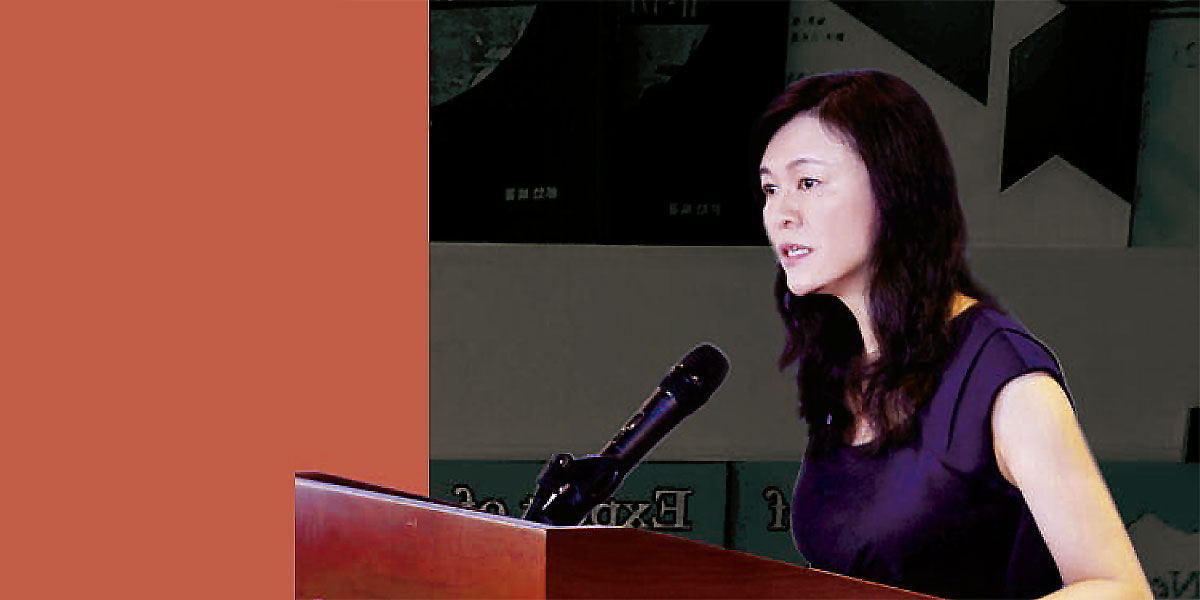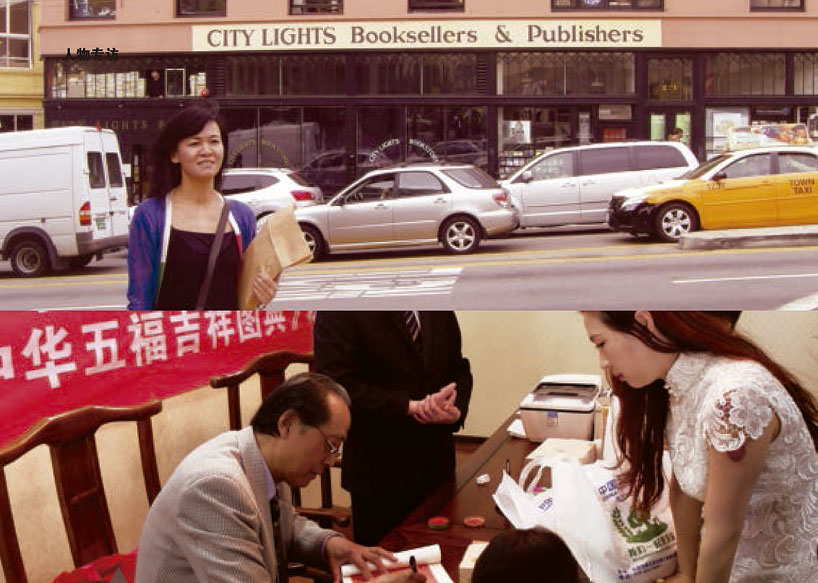
Sinolingua: 30 years of dedication and persistence
Sinolingua was the first Chinese publisher to specialize in Chinese teaching and learning materials for foreigners, its multilingual publications cover the largest range of languages and its copyright export sales are the highest in China. We Interview Han Hui, editor-in-Chief of Sinolingua
In 1980, Elementary Chinese Readers was published, one of the earliest textbooks for TCSL (teaching Chinese as a second language) published in China.
In 2006, the Italian subsidiary of the Hachette Book Group purchased the copyright of Interactive Chinese for 90,000 Euros, the highest price paid for this kind of publication in China at the time.
In 2009, the overseas subsidiary Sinolingua London was established. Its publications My First Chinese Storybooks, Chinese for Secondary School Students, Exploring China, etc., were particularly well received in Britain.
In 2012, a revised edition of Contemporary Chinese, a Confucius Institute endorsed course book, was published. lt was well received by many teachers and students of Chinese around the world. Books of the same series have been translated into 46 languages and some of them were the first Chinese teaching materials ever written in the native languages of the learners.
In 2013, as a result of collaboration between China and the US, Encounters: Chinese Language and Culture, an educational Chinese language TV programme was brought onto the market. It was described as an “exciting” project by the representative from Yale University, the project’s American investor.
In 2015, i-Chinese Resource Bank, a platform containing Chinese language teaching resources, was launched, and Teach pal, a platform for two-way language learning went online.
All these achievements were made possible by Sinolingua, a publisher with less than 60 members of staff. It was the first Chinese publisher to specialise in Chinese teaching and learning materials for foreigners, its multilingual publications cover the largest range of languages and its copyright export sales are the highest in China. Every year more than 200 new titles are published and the copyrights of over 150 titles are bought by other publishers. It has long-term cooperation deals with more than 20 overseas publishers and its books are sold in over 150 countries and regions. In this issue let’s listen to the Editor-in-Chief of Sinolingua, Ms Han Hui, as she talks about what Sinolingua has been through in the last thirty years of TCFL publications.
Reporter: Next year marks the 30th anniversary of Sinolingua. Can you tell us under what circumstances Sinolingua was established and what its mission was at the time?
Han Hui: Sinolingua was established in January 1986 when the first wave of Chinese mania appeared. A large number of overseas students came to China to study Chinese but there was no appropriate teaching material for them at the time. After TCSL was fully recognized as an academic discipline in 1980s, our country began to promote Chinese language teaching, and it was under such circumstances that Sinolingua was established. It was affiliated to China Foreign Languages Publishing Administration (also called China International Publishing Group, CIPG) and its mission was to publish Chinese teaching materials for overseas students studying in China. At the time it was the only publisher in China specialising in TCSL publications.
Reporter: So at first Sinolingua only published books for overseas students who came to study in China, but later focused on learners of Chinese abroad What brought about this transition?
Han Hui: University-affiliated publishers entered the domestic market and they had access to teachers and international students, so it was easy for them to get first-hand information about their intended customers, which gave them a competitive edge. What Sinolingua found was that it needed to focus its specialties on the overseas market, where we had fewer competitors. Besides, we could also draw on support from the China International Book Trading Corporation , a subsidiary of CIPG, to promote our products through their overseas export channels.
Reporter: Now another wave of Chinese mania is sweeping the globe. Chinese language learners in different countries and regions seem to have different and diverse needs and expectations. What is Sinolingua doing to diversify its product range to meet the different needs of its customers?
Han Hui: Our potential customers are scattered around the world and people from different areas have different learning needs and expectations. These are two significant difficulties we have encountered when tackling the overseas market. Although there are now more and more people learning Chinese, the total number of learners is not great and they have different needs and learning habits.
It’s quite possible that a niche in the overseas market will have no more than a hundred customers. Another problem is that most of the current teaching materials were written by teachers in China who had little knowledge of education systems and learning habits in other countries. Therefore when these books were introduced onto the international market, people found them less than satisfactory.
In order to overcome these difficulties, Sinolingua adopted three strategies. First, we decided to publish in multiple languages. Most of the teaching materials only existed in English versions, so our multilingual versions made Chinese learning much easier for learners in non-English speaking countries. Second, we decided to provide multimedia products. We developed various multimedia products as teaching aids, ranging from the earlier cassettes and video tapes to the more modern electronic books and apps. Third, we sought out overseas collaboration. We worked with teachers and publishers abroad who had :first-hand knowledge of the market and who were well-informed about local needs. It enabled our products to meet the local needs and become more suitable for potential readers.
Of course these strategies meant that each kind of teaching material and its supplements were only published in a limited number. For example, a set of teaching material for the Russian market had to be further diversified according to age group and learning motivation, making the market much smaller for each of the tailored products.
Reporter: In 2009, the first overseas subsidiary of Sinolingua was established in the UK, making publishing “local teaching materials” a reality. Can you tell us about the experience you have gained and the significance of establishing an overseas subsidiary? Are there further plans for international development?
Han Hui: We are actually working on an overseas development plan right now. We want to set up our own editorial departments inside major publishing houses abroad. Like the Confucius Institute, an educational collaboration between Chinese and overseas universities, we are trying to make use of local resources more efficiently and flexibly to promote overseas cooperation.
We have expanded our overseas sales channels by seeking cooperation with retailers and major bookstores in the US, Mexico, Spain, France, the UK, Germany, Indonesia, Singapore, India, Australia, Egypt and Turkey to enable our products to enter the local mainstream markets.
Additionally, we are trying new ways of localising our products. Every seven years the Department of Education in Georgia, USA, organises a public tender process for procurement of teaching materials for the state. This September our tender for thirty different teaching materials was accepted. This meant that our products met the local needs and have been officially recognised by the local educational establishment, and we are now one step closer to becoming a supplier of local mainstream teaching materials. This is one of our objectives for North America.
Reporter: Sinolingua is very successful in exporting copyright. Do you have any experience that you can share with us?
Han Hui: Sinolingua has so far exported the copyrights of more than 1,000 titles, which makes it one of the top three copyright exporters among independent domestic publishers. In recent years our copyright exports have increased to around 150 titles a year. It is our tradition to debate the merits of potential publications and one of the important conditions for funding a publication project is whether its copyright is likely to be exported. In recent years the books exported by Sinolingua have won several overseas awards and received funding from local governments, solidifying its presence in local mainstream markets.
Reporter: What has Sinolingua achieved as an important partner for Hanban in teaching material development? What experiences can you draw from the partnership?
Han Hui: The partnership between Sinolingua and Hanban was forged a long time ago. We collaborated on the Contemporary Chinese series of books prior to 2005 and have since then formed a much closer relationship. Contemporary Chinese and its related products have been published in 46 languages and they have formed the majority of our sales in recent years. There have also been other collaborative projects that have produced titles such as Tales from Chinas Classic Essential Readings, Common Knowledge about China and Five Thousand Years of Chinese Characters. More and more people, we think, will benefit from the publication of these titles. In the meantime, we get a great deal of satisfaction from seeing teachers from non-English speaking countries get very excited when they see the first Chinese teaching textbook published in their native language.
When developing teaching materials, we have found that the age of learners of Chinese worldwide is trending lower. They also have much clearer goals for Chinese learning and there is an increasing demand for Chinese textbooks on tourism management, science and technology, business management and medicine. There are so many people taking the HSK tests that revision books are also in great demand. These have all resulted from Hanban ‘s work in promoting Chinese language learning.
Reporter: Confucius Institutes around the world are at the forefront of overseas Chinese language teaching. Do you have any plans for future collaboration? What areas do you expect the Confucius Institute to contribute in terms of future collaboration in teaching material development and publication?
Han Hui: We have overseas representatives, but they are nothing when compared with the number of Confucius Institutes. There are now nearly 500 Confucius Institutes and 1,000 Confucius Classrooms around the world, which can collect an enormous amount of information about current teaching and learning needs. They are like our “product testers”, giving us information about the readers’ expectations and needs. The Confucius Institute is expanding its size and influence, and its teachers are all dedicated to promoting Chinese language learning around the world. We hope that through the Confucius Institutes, we will be able to secure further collaboration with local educational establishments. The information shared by the Confucius Institute is of great help for us and we hope to set up a process in future to get more information about the needs of our customers and their feedback from Confucius Institutes, so that we can have better clarity in designing and revising teaching materials.
Reporter: We have arrived at the age of media convergence, and traditional publications are facing the transition to digital formats. How has Sinolingua prepared for the transition?
Han Hui: The nature of language teaching and learning means that it cannot be limited to using materials printed on paper. It needs other media. We have been working on multimedia teaching material over the years and Interactive Chinese was our earliest product. This year we have established the i-Chinese (or Ai Zhongwen ‘loving Chinese’) Resource Bank, a data and resource platform providing free materials for Chinese language teaching and learning. The teaching materials we have developed over the years have been pooled and are available on the platform so that teachers can find suitable reading materials, exercises, tests, and audio-visual cultural clips to supplement their existing textbooks, and students can also find more learning resources. Another platform for two-way learning Teachpal (or Shi Hu ‘being teachers’) also went online. This platform is the embodiment of a new teaching model with elements of a social network, where teachers and students around the world can interact online, to ask questions and to give or take language lessons. In addition to digitization, Sinolingua is also trying other ways to extend and improve the Chinese language learning process, for example, by offering more off-line services to better balance our customers’ online and off-line experience.
Reporter: What do you think of the relationship between Chinese language teaching and the promotion of Chinese culture? How do you combine the two in your work?
Han Hui: The teaching of language and culture cannot be separated. People will often unwittingly learn about the culture of the language they are studying, which might be more subtle and effective than the direct learning of a culture. This is also the reason why Sinolingua has adopted a strategy of differentiation. Since the year before last we have focused our efforts on producing cultural reading materials, as we have found that there are more and more Chinese teaching materials on the market, but there is an obvious lack of corresponding cultural reading materials.
When selecting cultural topics, we chose from traditional Chinese culture to give the titles Wise Men Talking Series and Chinese Sages Series, but also gradually more from contemporary Chinese culture to give the recently published Glimpses of Contemporary China. We will also publish abridged versions of literary works suitable for learners of Chinese and series of books on Chinese cuisine.
We need to take the reading habits of overseas readers into consideration when compiling cultural reading materials. Promotion of culture is a two-way process-we ought to understand the reader’s perspective in order to achieve effective communication. We have not found many writers in China with an international perspective. Perhaps the Confucius China Studies Program run by Hanban will find the right talents to help us in the future.
Reporter: Sinolingua has achieved so much in the last thirty years. Can you tell us about its plans for the future?
Han Hui: Sinolingua started as a small publisher with six or seven members of staff. Now we have almost 60 members of staff, including eight foreign experts; its number of publications is also expanding gradually. On average, 150 titles of teaching materials and revision books in up to 46 languages are published each year. It has exclusive distribution agreements with ten overseas retailers covering more than 150 countries and regions. The annual turnover of exports has reached around ten million RMB, which means an income of around eight million RMB. The copyrights of over 150 titles are exported each year, which brings royalties of around one million US dollars annually. Sinolingua has a very promising future.
But we want to achieve even more and we are expanding our business every year. We plan to be listed on the ”New Third Board” (an over-the-counter equity market) to expand our business by issuing shares. We will continue to focus on the publication of Chinese teaching materials and culture reading materials, and at the same time improve the process of Chinese language teaching/learning. We hope to attain a faster rate of development in the future.
 Published in Confucius Institute Magazine
Published in Confucius Institute MagazineMagazine 41. Volume 6. November 2015.
View the PDF print edition



























No hay comentarios:
Publicar un comentario